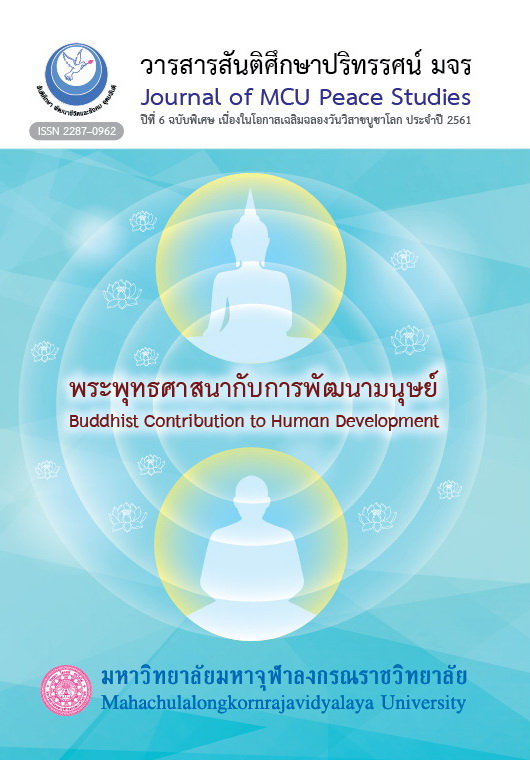พุทธบัญญัติเกี่ยวกับนักบวชนอกศาสนา
Main Article Content
บทคัดย่อ
The objectives of this article are: 1) to study the non-Buddhist monks in Buddhist
scriptures, 2) to study the the relationship between Buddhist and non-Buddhist monks,
and (3) to analyze the Discipline (Vinaya) for non-Buddhist monks. This paper is a
qualitative research. As a result, is was founded as follows :-
1. The non-Buddhist monk in Buddhist scriptures was called Aññatitthiya classified
into three groups, namely, 1) ascetic (Isi or Jatila ), 2) Parippãjaka divided into 2 groups;
ascetics wearing clothes and nude ascetics (whereas nude ascetics are divided into Acelaka
and Ājĩvaka), and 3) Nigantha (followers of Maha Veera). These other religious ascetics often
lived together in a hermitage or monastery which is similar to a Buddhist temple.
2. In term of relationship, Buddhism had dealt with other religious ascetics in three
dimensions, namely, 1) personal relationship, 2) social relationship, and 3) teaching
relationship. Some teachings are identical to each others. This identity of teaching
generates admiration to one another. Although there were some different teachings, they
were based on good intention to make correct understanding without quarrels.
3. The discipline legislated by the Buddha for non-Buddhist monks was classified
into six topics, namely, 1) legislation on ordaining The non-Buddhist monks, 2) legislation
on treatment towards monks who convert to other religions, 3) legislation on practice
teachings of non-Buddhist monks, 4) legislation on the use of four requisites, 5) legislation
on aid non-Buddhist monks, and 6) legislation on behavior as non-Buddhist monks. These
Buddhist legislations were legislated by Buddha in order to prevent suspicion among
religions and infiltration to undermine Buddhism as well as confusion among Buddhists.
However, Buddha did not prohibit anyone who demanded to study Buddhism with good
faith.
Article Details
ทัศนะและความคิดเห็นที่ปรากฏในบทความในวารสาร ถือเป็นความรับผิดชอบของผู้เขียนบทความนั้น และไม่ถือเป็นทัศนะและความรับผิดชอบของกองบรรณาธิการ ยินยอมว่าบทความเป็นลิขสิทธิ์ของวารสาร


